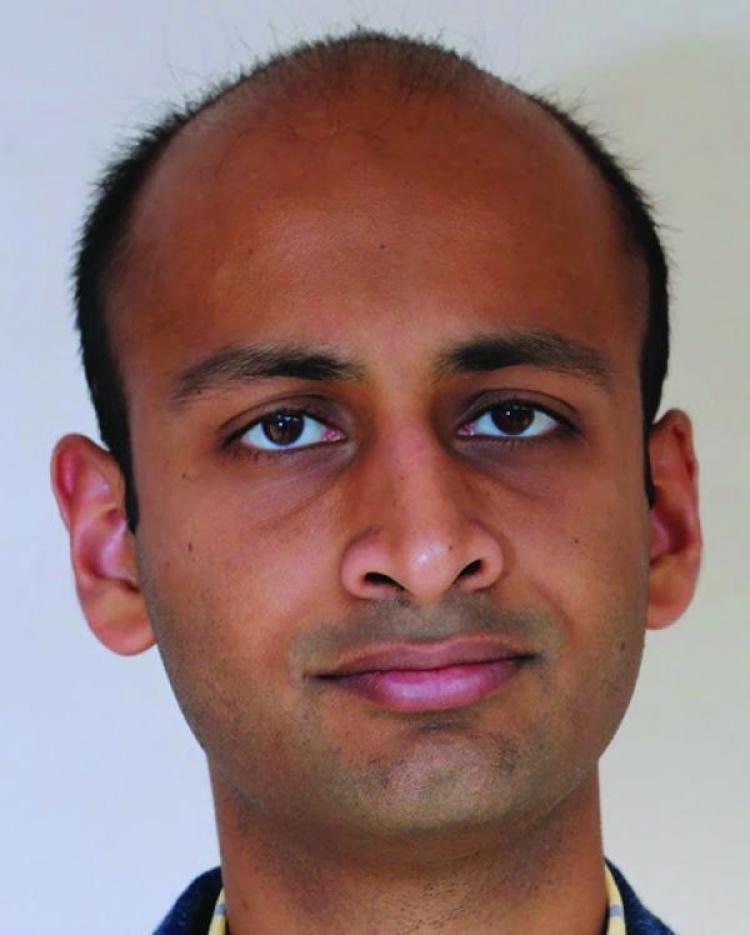CU Boulder physicist aims to find new quantum states of matter
Rahul Nandkishore named 2021 Simons Fellow in Theoretical Physics
Rahul Nandkishore, associate professor of physics at the University of Colorado Boulder, has been named a 2021 Simons Fellow in Theoretical Physics.
He is one of five theoretical physicists nationwide to win this honor, which supports academic leaves for researchers for up to one year, allowing them to focus solely on research for the “long periods often necessary for significant advances” in their disciplines.

At the top of the page: Quantum systems made up of many particles can be elegantly described with a neural network. (Image: iStock.com/naddi). Above: Rahul Nandkishore
Nandkishore, whose research focuses on the search for emergent phenomena in quantum many-body systems (microscopic systems made of many, interacting particles), plans to use his sabbatical year three ways:
- to make new breakthroughs in many-body quantum mechanics;
- to develop a new theoretical direction exploring many body physics in the context of pump-probe experiments on solid-state materials; and
- to renew his research effort in (equilibrium) solid state physics by collaborating closely with the Stanford experimental group.
A key pillar of modern physics is the idea that 'more is different'."
Nandkishore explains his work this way: A key pillar of modern physics is the idea that “more is different”—that when you have a large number of degrees of freedom all interacting together, you can get qualitatively new phenomena with no analog in few-particle systems.
“These new phenomena define ‘phases of matter’ (the most familiar examples of which are the everyday phases of water—solid, liquid and gas),” Nandkishore said.
“Many-body quantum mechanics is the study of systems with many quantum degrees of freedom all interacting together, and allows for new types of phases of matter with no analog in classical (i.e., not quantum mechanical) settings.”
The most famous of the “quantum” phases of matter are superconductors and Bose-Einstein condensates (the latter of which were discovered at CU Boulder) but there are many more, he said. The central objective of Nandkishore’s work is to find new quantum phases of matter, particularly systems out of equilibrium. The phases of matter that can arise in static, equilibrium systems are by now fairly well understood, he said.
“However, we have only a very cursory understanding of what can happen in dynamical (i.e., out-of-equilibrium, time-evolving) quantum systems. The search for qualitatively new quantum phases of matter in a non-equilibrium setting is the central focus of my research,” Nandkishore said.
The main breakthrough he hopes to achieve is to discover a new dynamical phase of quantum matter, or more than one new dynamical phase.
The Simons Foundation’s mission is to advance the frontiers of research in mathematics and the basic sciences.
Nandkishore earned his PhD in physics at the Massachusetts Institute of Technology in 2012, did a postdoctoral fellowship at the Princeton Center for Theoretical Science, and joined the CU Boulder faculty in 2015.
Nandkishore is the second member of the CU Boulder faculty to be named a Simons Fellow in Theoretical Physics. The first was CU Boulder Physics Professor Michael Hermele in 2014.

